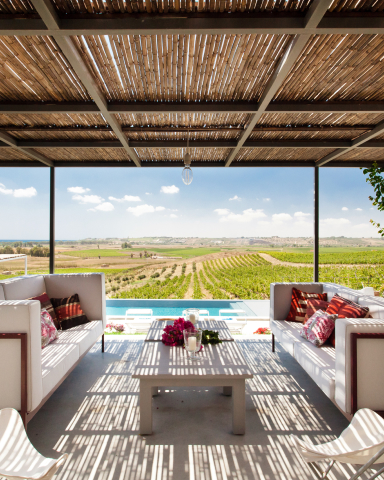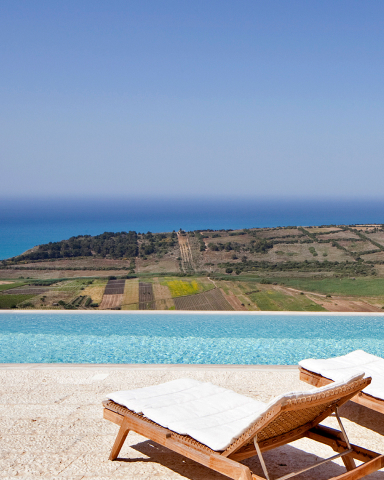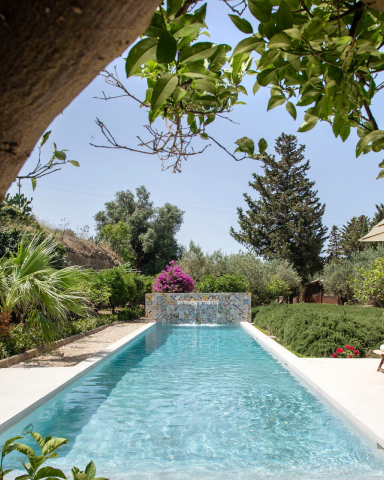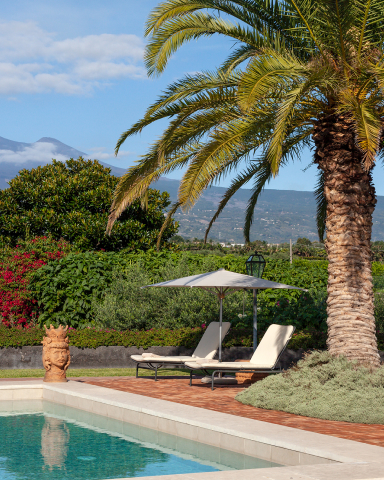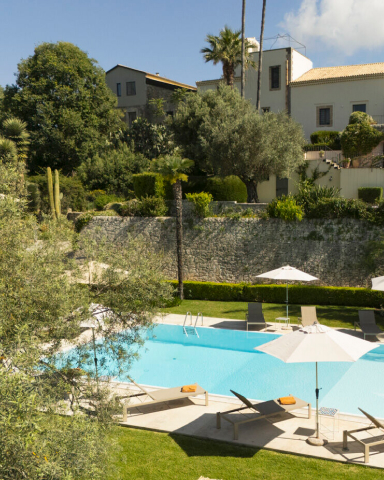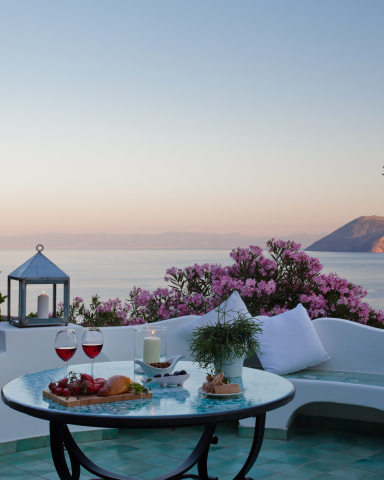A Guide to Sicilian Ceramics: History, Craftsmanship & Where to Find Them

Archaeologists working in Sicily have unearthed pottery dating back to at least 2,400BCE, testimony to the island’s multi-millennial ceramic-making traditions
The Evolution of Sicilian Ceramics
Waves of settlers brought their own techniques, innovations and preferred colour schemes, leaving behind them rich vein of diverse and flourishing styles. The Greeks brought their artistry and the distinct forms of their vases, amphorae and urns, while the Romans left a tradition of terra sigillata, characterised by warm earthy reddish colours and relief decoration.
Perhaps the most significant contribution to Sicilian ceramics, however, came with the Arabs. Their vast empire was alive with ceramic-making techniques largely forgotten in the west. The Arabs introduced an ancient Egyptian process of mixing tin oxide with clear lead glazing to provide an opaque surface on which decorations could easily be applied. Their preferred palate was green and aubergine and the decorations themselves were strictly geometric patterns, still a feature of Sicilian ceramics today.
The Spanish also played a significant role in making Sicilian ceramics what they are today. The Spanish dominated Sicily for nearly four hundred years from the 14th century. They reintroduced certain Arab-inspired traditions but also, and more significantly, imported two hugely important forms of ceramic art: maiolica (originally majolica) and azulejos.
The name maiolica derives from Mallorca, once a major centre of ceramics production and trade. It refers to a tin-glazing technique that produces a brilliant white background, onto which other metallic oxide-based colours are applied. The white under-glaze absorbs the colours and retains their brightness after firing.
The maiolica technique was used for all manner of ceramics, from vases and plates to light fittings. It was also used to create azulejos, hard-wearing decorative tiles. As the Baroque arrived in Sicily and grend palazzi sprung up across the island, azulejos were the first choice of flooring.
Most were embellished with relatively simple geometric patterns, but the wealthiest members of the nobility commissioned azulejo floors. These depicted large-scale pastoral scenes, fantastical collections of creatures, family coats of arms, and much more. The ceramics-producing town of Caltagirone flourished in this period, as did Naples.

Contemporary Sicilian ceramics
Today, Sicily still boasts a thriving ceramics industry, centered in four main towns: Caltagirone, Santo Stefano di Camastra, Burgio, and Sciacca. Each has its own distinct style, particularly where traditional colours are concerned:
- In Caltagirone, rich blues and emerald greens provide contrast for golden yellow floral motifs
- In Santo Stefano di Camastra, a deep, fiery, orange-red base is often preferred, on which delicate patterns in white and a range of blues swirl
- In Sciacca, electric and cornflower blues, seawater turquoise, and sunny yellows stand out on pure white
- In Burgio, the classic palette is a beige sandy background with simple green, earthy ochre and orange decorations.
There are, of course, variants on these basic themes and younger artisans tend to employ more contemporary artistic styles.
All four towns are full of workshops and outlets with potters busily crafting and selling their wares. Streets, steps, façades, balconies, churches and parks are all adorned with colourful tiles and decorative ceramic objects. Caltagirone, Santo Stefano di Camastra and Burgio, meanwhile, also have impressive ceramics museums.
Sicilian specialties
Testa di Moro: Ceramic heads
If you are interested in purchasing some Sicilian ceramics, you will find a wide range of azulejo tiles, plates, bowls, jugs, tabletops, jars and much more. You will also come across a few traditional specialties that are uniquely Sicilian.
The first is the Testa di Moro (Moor's Head), a receptacle for plants whose origin is the stuff of legend. One of Boccaccio’s stories in the Decameron recounts the fate of Lisabetta of Messina, who dug up the head of her lover after he’d been murdered by her brothers. She used it as a pot for her fragrant basil plant, which, irrigated by her tears of mourning, grew prodigiously.
A similarly gruesome, 1,000-year-old story is told in Palermo. On hearing that her Moorish lover was planning to return to North Africa, a young Norman lady became prey to jealousy.Luring the unfortunate fellow to her chamber for one last fatal liaison, she beheaded him and displayed his head as a macabre trophy on her balcony. It became a pot for growing basil. (Next time you tuck into a plate of pasta con pesto, spare these two men a thought!) Despite its rather gruesome narrative, the Testa di Moro is a true Sicilian classic and a great decorative talking point to take home.Learn how to book your holiday
Ceramic pine cones
Another much-loved Sicilian ceramic specialty is the ubiquitous pigna (pine cone), which symbolises vitality, good health, immortality and more. You will come across them not only in shops but also atop gate pillars, on bedsteads and adorning balcony railings. They come in all colours, patterns and sizes and are commonly given as an augury of good luck.
You can learn more about Sicilian architecture, mythology and cultural traditions, or find out where to stay in Sicily in our dedicated travel guide. Alternatively, you can contact our team for more information about our best villas in the area and our top culture and activity recommendations.

We're Villa Matchmakers
Because our local experts have personally visited each of our destinations, we know exactly what makes them special. Tell us what your ultimate villa holiday looks like, and allow us take care of the rest.

